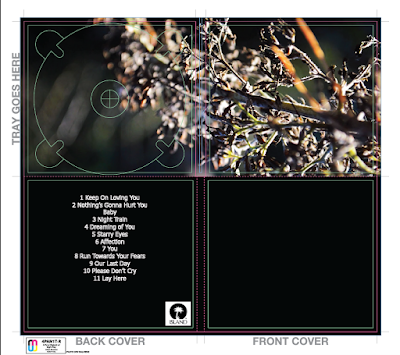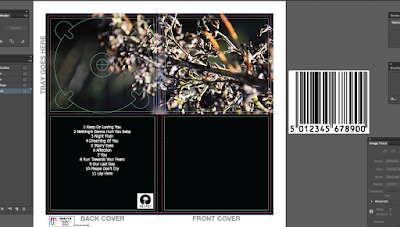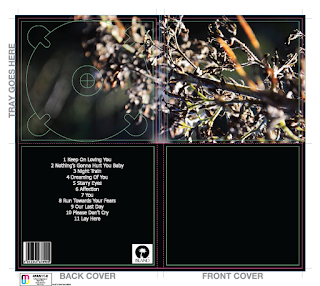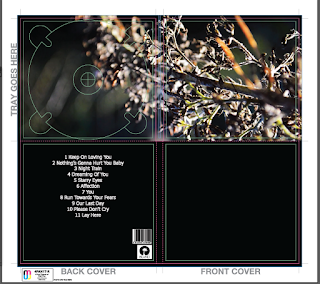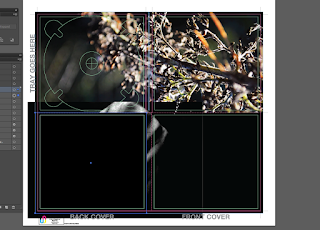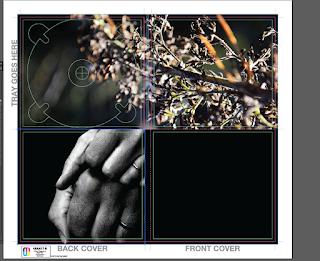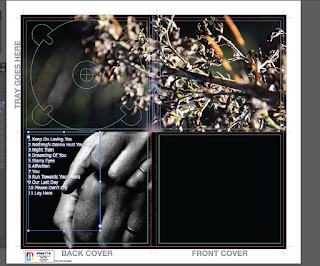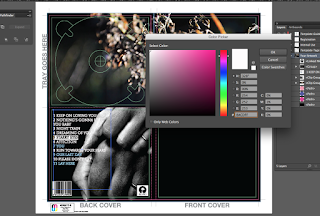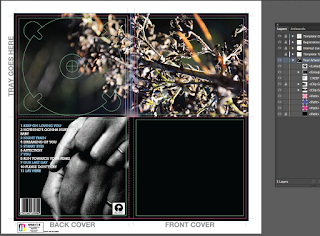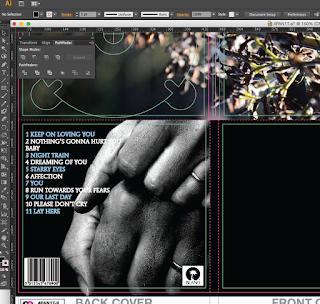Conventions, Functions and Analysis
For the secondary ancillary product, I have to produce an appropriate magazine advert that "sells" my band and the music video that I have created. In order to create a successful ancillary product, I have to undertake the appropriate research that will influence my own work.
The general functions of magazine adverts are as follows:
- To promote whichever artist or band they are representing
- To provide mass audiences with visual stimulation and to be aesthetically pleasing or "eye-catching"
- To sell the song or album that the artist/band has come out with
Aside from these general functions, magazines also have "stock" conventions that are put in place by designers to ensure that the functions are correctly and appropriately fulfilled and achieved:
- The song or album title that the band are trying to sell and advertise - in order for audiences to actively engage with the advert and thus, the band, the ,magazine advert must ensure that the name of the song or album is blatantly obvious so that audiences know what product they would be purchasing.
- Release dates of said album or song - audiences must be aware of when they are able to start purchasing the album/song.
- The artist/band name (this is imperative) - this feature is utilised so that the artist/bands are made known to mass audiences, which will consequently result in them becoming more well-known in the music industry.
- The record label that the artist/band is assigned to - the record label logo could be indicative of the genre of music that audiences would end up listening to, if they so wish to engage with the band or artist.
- Information about the album - this is included so that audiences are made aware of the style or genre of music, as well as enabling them to familiarise themselves with the album and also the track-list.
- Where to purchase or download the album from - with advancing technology, audiences need to be made aware of the platforms that they can purchase the album from, for example, platforms such as iTunes or Amazon may be made readily available for audiences to interact with.
- Tour Dates (optional) - I say this is optional because not every band may have set tour dates or they may not intend to start touring around major cities, but perhaps just advertise a new album or song.
- Reviews (optional) - reviews might be included to pique audience interest and "show off" the band and the reviews that they may have gotten from respected music industries, i.e. NME
- Social Media links/QR Codes - again, as the aforementioned point states, advancing technology enables audiences to access anything on a variety of platforms, so Instagram links or Twitter links may be included on the advert so that audiences can interact with the artist on multiple platforms
- A main/central image - this main image should relate to the band or artist image so that it makes it easier for audiences to recognise their products in the future - should there be a repeating logo or image.
Lana Del Rey - Born To Die
I have chosen Lana Del Rey's magazine advert to analyse and explore the expected conventions of an advert. Upon first glance, the most glaringly obvious thing that you are drawn to is the portraiture of the artist herself. 'Born To Die' is Del Rey's second studio album, so having herself central to the advertisement implies that she is trying to make herself known to potential audiences whilst making an impact on the music industry. Her retro-like image is readily apparent and could be a staple aesthetic for future albums that she releases. Another convention of this magazine advert is the obvious, bold text that identifies who she is as an artist. Again, this would have been done to make a statement and only reinforces the idea that she is trying to make herself known to a 21st Century audience. The album name, 'Born To Die', is also in a clear, bold font and immediately makes it known to audiences what album they would be investing their money in, and perhaps through the seemingly "depressing" album name, the genre of music could be considered somewhat melancholic or nostalgic. What is also apparent is the release date of the album: 30th January. Note how the font is in italic and is obviously more subdued and dainty compared to the font that is used for the artist's name and the album title. This may have been done so that it adds another dimension to the magazine advert - as by having all of the text in the same bulky and heavy font could have been a little dramatic and echoed a "congested' feel to the product. Looking at the bottom of the advert, the designers have included her website - allowing audiences to branch out when engaging with the product. The website may have merchandise that Lana has created and may also be another source for audiences to purchase the album. Colour-wise, the advert doesn't have any outlandish or garish colours - perhaps implying that although the artist clearly wants to make herself known, she likes to take the more subtle approach by using pastel blues and whites; complimented by a red lip which could become (as mentioned before) a staple image or part of her iconography.
The Stone Roses
A second magazine advert that caught my attention was one for The Stone Roses. The most prominent convention on this advert is the band name that has been included in a gritty, bold and capitalised font. Bold and capitalised font usually has the most eye-catching effect on audiences and draws audiences to engage with the product. The overall aesthetic of the magazine advert is in keeping with the genre of music that The Stone Roses represent: rock and grunge. The paint splattered background reinforces the carelessness often associated with major rock bands and also adds a grunge-like appeal. Another convention included on the advert is the detail of where the album is available for purchase. The obvious logo for iTunes situated in the bottom-left hand corner of the advert makes audiences aware that they are able to download and invest money for the album through iTunes. A feature that was missing from Lana Del Rey's advert were the use of reviews from music industry institutions. It is clear that through the clever use of band badges/pins (which is in keeping with the genre of the band), the designers have placed reviews from 'Q', NME and MOJO on the product - which in turn coerces the audience to interact with the product and potentially purchase the album. They would have featured the best reviews on the advert for obvious reasons - one being that they want people to know that their music has been deemed as the "greatest debut album of all time" and persuades them that their music is worth the money. However, overall, I wouldn't have said that this was the best magazine advert that I've seen, although it did interest me. As I consider a wider context and a wider audience, the design may not be appropriate for piquing the interest of alternative audience demographics - purely due to the subdued and dull colours that are used. Perhaps digitalised colours and more contrasting colours would have proved more appropriate, although you could argue that this wouldn't be in keeping with the genre of the band.






